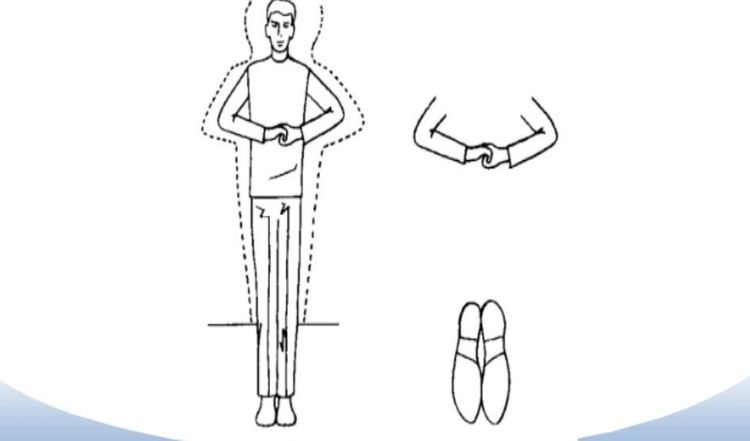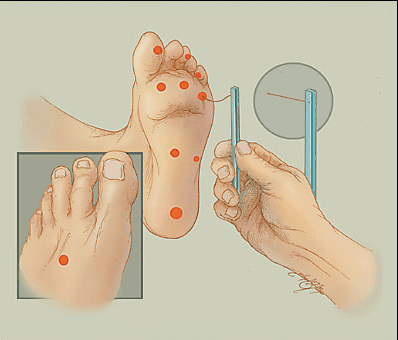This is an automatically translated article.
Romberg test is a way to examine through posture and posture to help evaluate the function of the cerebellar and vestibular systems. The Romberg test is an important step in a comprehensive neurological examination as well as in patients with signs of vestibular syndrome.
1. What is the Romberg test?
The Romberg test is an appropriate tool for diagnosing the etiology of postural dysesthesia, a vestibular gait disorder caused by abnormal perception related to joint positional information. Simultaneously, performing the Romberg maneuver has also been shown to be a highly sensitive and accurate way to measure the degree of imbalance caused by central vertigo vestibular syndrome and peripheral vestibular syndrome. border and caused by head trauma. For this reason, this modality has been widely used in most neurology clinics for nearly two centuries.
There are three sensory systems that provide input to the cerebellum to maintain the stability of the body when the eyes are open: visual, depth sense, and vestibular system. At this time, the balance is created thanks to the control and stability control of all three components.
However, really only two of the three systems stated are necessary in maintaining balance. Therefore, when the visual input is removed, which is the main theoretical basis of the Romberg test, instability due to lack of vision will be easily revealed, especially when asking the patient to stand in positions special position. Even if there is more severe damage in the deep sensory pathways or the vestibule, the patient may not be able to maintain a standing position, even with the eyes open.
In addition, before performing the Romberg maneuver, the physician also needs to check the integrity of other structures that help ensure the patient's balance in the upright position such as arthralgia, muscle weakness, tremors idiopathic ,... These are to help rule out confounding factors that could lead to a false-positive Romberg test.

Nghiệm pháp Romberg giúp bác sĩ chẩn đoán nguyên nhân của chứng mất cảm giác tư thế
2. How was the Romberg autopsy?
The Romberg test is performed through the steps presented as follows:
The patient is asked to remove his shoes and stand with his feet close together on a hard surface. The arms are kept pressed close to the sides of the body or crossed in front of the torso.
Stage 1: The patient stands still and opens his eyes.
Tense 2: The patient stands still and closes his eyes. However, the patient still needs to try to maintain his or her balance. For safety, it is important that observers stay close to the patient to prevent potential injury if the patient falls. In addition, when the patient closes his eyes, the examiner must also ensure that there is no change in noise or sound in the room to eliminate the possibility of self-adjusting by light and sound, causing negative results. falsity.
Alternatively, to make the Romberg maneuver more difficult, more likely to reveal imbalances, the clinician may attempt to increase the complexity of the pose, which requires a high degree of self-efficacy. Adjust the position of the body, eg standing upright with arms forward, fingers spread.
Furthermore, in order to increase the exposure of imbalanced lesions, the Romberg test is modified by standing on divergent but close legs. In it, the patient places one foot in the heel position of the other foot and still spends two periods with eyes open, then eyes closed. Meanwhile, the patient can still cross his arms in front of his chest, place them on his shoulders or bring them forward to increase the difficulty of the pose. However, this position can become difficult for obese people, the elderly, so they may encounter unwanted confounding factors.
3. When is the Romberg test positive?
The Romberg test is positive when it is observed that the patient cannot maintain balance and stand in the correct initial position during both open eyes and especially during closed eyes. It is the feeling of loss of balance that requires the patient's body to sway, the feet to move, or the patient to fall.
Conversely, if the patient is still able to stand upright and with minimal swaying, a negative Romberg test is still accepted.

Nghiệm pháp Romberg cần thăm khám bởi các bác sĩ chuyên khoa
4. What are the causes of a positive Romberg test?
A positive Romberg test is only evidence of a defect causing loss of postural sense and balance. This is the result of many problems, including:
Deficiency of vitamins such as vitamin B12 Central vestibular syndrome Peripheral vestibular syndrome Ménière's disease Cerebellar syndrome Conditions affecting the spinal cord, such as disease neurosyphilis Conditions affecting the sensory nerves such as peripheral neuropathy that attack the sensory nerves in chronic polyneuropathy However, the positive nature of the Romberg test corresponds to each individual patient. The cause is different. Specifically, the patient will tend to lean towards the side of the vestibular lesion while in neurosyphilis, the patient will stagger as soon as the eyes are closed without knowing which direction. Similarly, patients will also tend to spread their legs to widen the base of the base, to avoid falls in cerebellar syndrome.
In summary, the Romberg maneuver is very commonly used to test neural function in maintaining posture and regulating balance. However, this ability also requires the coordination of many different organ systems. Thereby, when examining the Romberg method, the doctor needs to understand the mechanism and know how to argue each case to detect the cause of imbalance correctly.

Thiếu vitamin như vitamin B12 có thể là nguyên nhân gây mất khả năng điều hòa cảm giác tư thế và giữ cân bằng
Vinmec International General Hospital is one of the hospitals that not only ensures professional quality with a team of leading medical doctors, modern equipment and technology, but also stands out for its examination and consultation services. comprehensive and professional medical consultation and treatment; civilized, polite, safe and sterile medical examination and treatment space. Customers when choosing to perform tests here can be completely assured of the accuracy of test results.
Customers can directly go to Vinmec Health system nationwide to visit or contact the hotline here for support.
References: ebmconsult.com, physio-pedia.com & neuroexam.com













